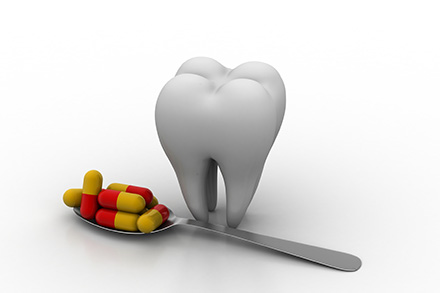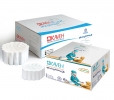Antibiotics — the 20th century’s miracle drug — was discovered two decades after “The Monkey’s Paw” was published, and it has , itself, become a real-world manifestation of Mr. Jacobs’s literary masterpiece. There’s no denying that antibiotics have saved millions, if not billions, of lives. However, we’ve learned that they also come with strings attached.
While microbial resistance is a problem that most commonly affects medical professionals, there are also issues specific to the dental community.
* Dentists write approximately 10 percent of all antibiotic prescriptions for humans.
* Dental personnel may receive pressure from patients and other clinicians to write antibiotic prescriptions.
* There’s difficulty collecting data on whether or not the prescriptions written in dentistry are appropriate.
* Dental students receive limited education on antibiotics.
* While there are specific guidelines for antibiotic prophylaxis, there are limited guidelines for prescribing antibiotics in dentistry for the treatment of infections.
* There’s concern that there are unnecessary and inappropriate prescribing practices of antibiotics in dentistry.

The theory of evolution
Charles Darwin has a good explanation as to why microbial resistance occurs — survival of the fittest.
“It’s when a microorganism mutates, evolves and changes,” Dorst explains. “Microorganisms become resistant to that antibiotic, so they continue to multiply and produce more resistant cells. And it gets back to the theory of evolution and selection of the fittest. The fittest survive and these microorganisms, where they can divide as rapidly as 20 minutes, have multiple opportunities within a 24-hour period to mutate, to evolve, to resist that antibiotic, and the fittest survive and they continue to multiply.”
Keeping up with changes
Microbial resistance is very dynamic, and so, too must be dental professionals’ efforts to stay on top of this ever-changing subject. Resources include the American Dental Association, Academy of General Dentistry, American Association of Oral and Maxillofacial Surgeons, American Association of Endodontists and American Academy of Orthopedic Surgeons, among others. Dorst also recommends attending continuing education meetingsto stay informed of the latest changes in protocols.

However, resistance isn’t the only concern of antibiotics. There are also adverse advents associated with antibiotic use.
“Clostridium difficile (C. diff) infection is one of the most serious consequences of antibiotic use,” Dr. Fluent explains. “This disease can range from asymptomatic to a fever with moderate diarrheal illness to severe illness and even death. It is estimated that there are about 450,000 cases per year and that antibiotics used in dentistry are commonly associated with C. diff infections.”
Managing potential C. diff threats requires specific prevention steps that are more advanced than conventional infection control measures.however, antibiotics’ ill effects can be mitigated, but it takes more than desperately praying on an Indian relic...


